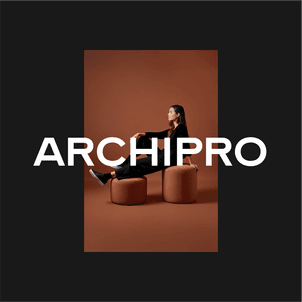One with the Land
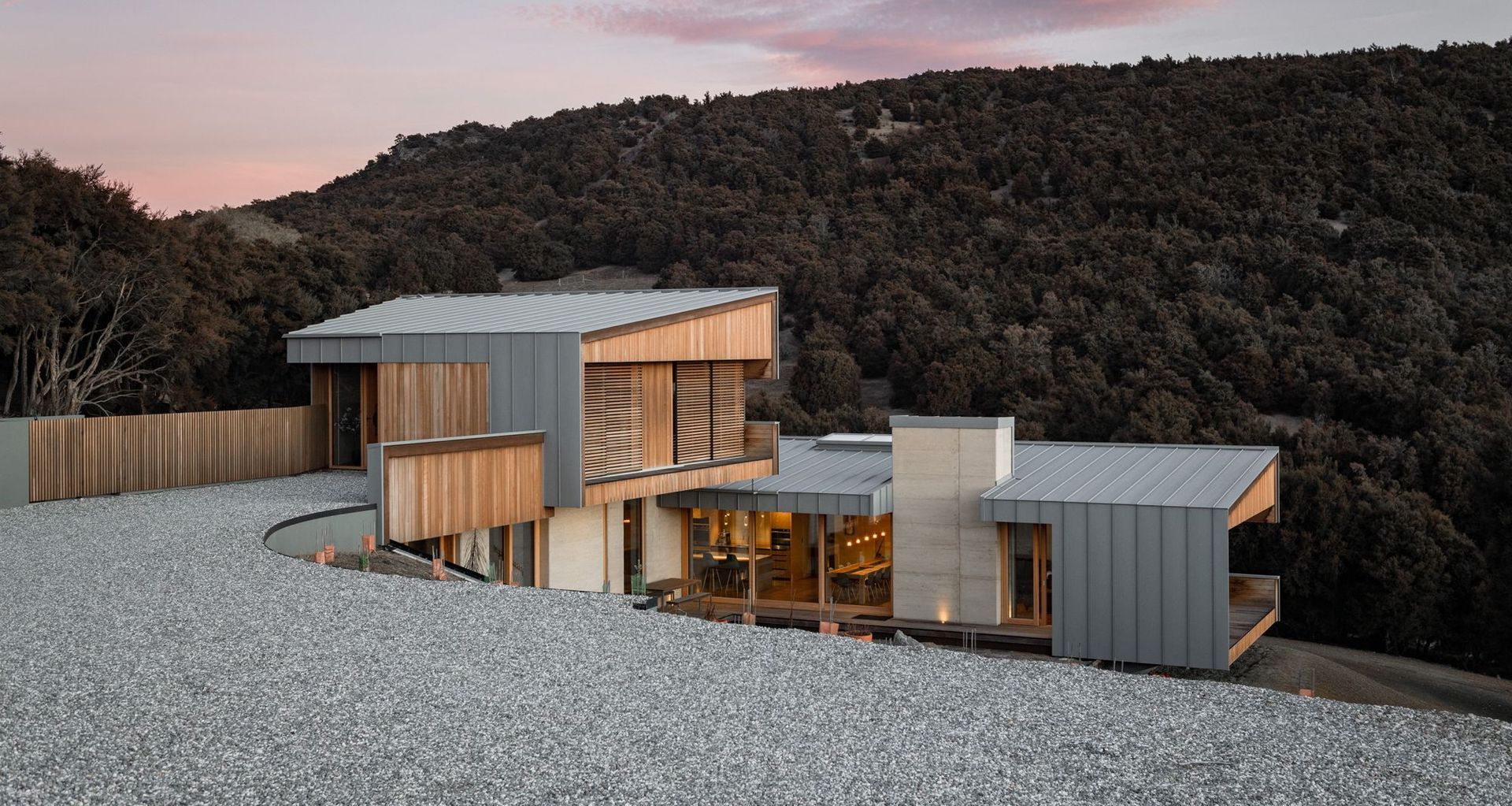

Nestled into a two-acre lot in the ‘Hidden Hills’ development of Wanaka, this home was designed to maximise the views over the hills towards Lake Wanaka while affording its owners a high level of privacy and comfort.
“The owner is a winemaker and we had originally discussed a concept where the house would be buried into the site, much like you would do for a cellar, however, after looking at other options, we decided that following passivhaus design principles would provide the high level of sustainability and environmental performance important to my client; while following the natural contours of the site would satisfy the requirements for privacy,” says Architectural Designer Andrew Simpson.
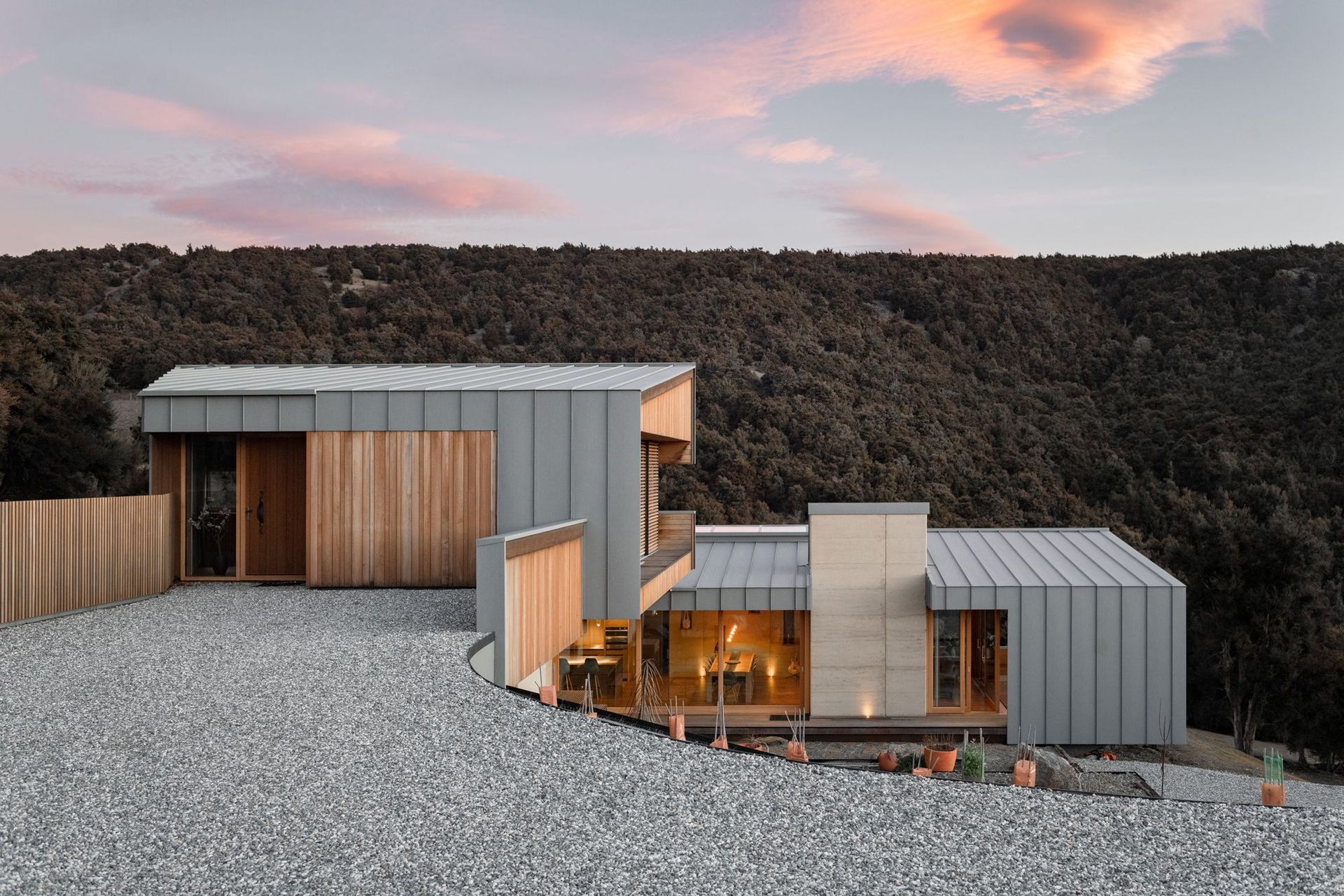
“The main constraints came from the site itself, which slopes away towards the south. Coupled with the request for privacy, this meant situating the home lower on the slope, in turn hampering access to the sun. In response, the design steps down the slope but faces along the slope to maximise the view.
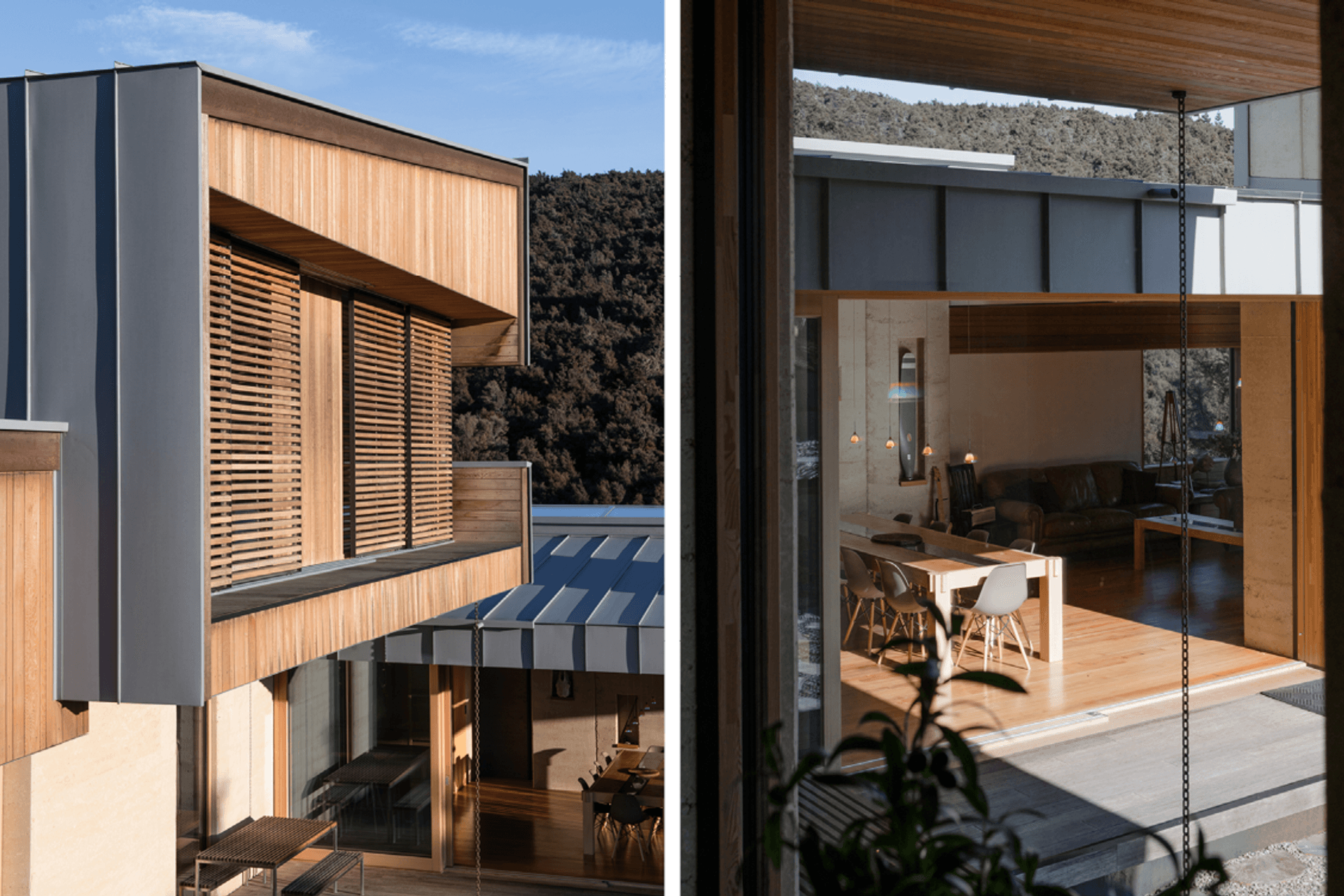
“Council’s district plan rules around fire safety considerations and exterior colours were the only external factors that needed to be incorporated into the design and were already pretty much accounted for.”
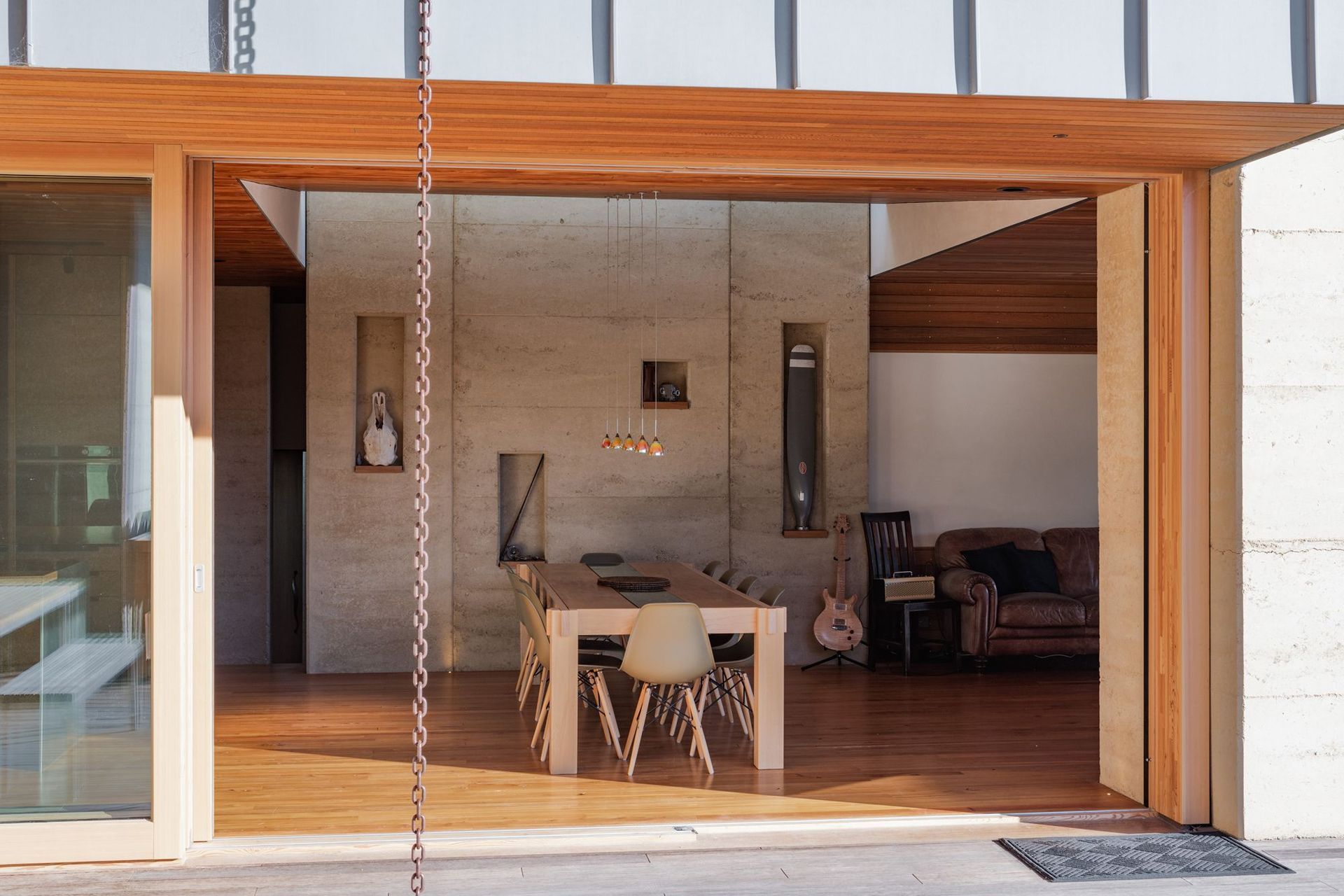
The resulting design comprises a series of intricately composed spaces—both internal and external—that unfold as they intertwine, flowing from and doubling back on each other to create an arrangement of niches, frames and habitable spaces.
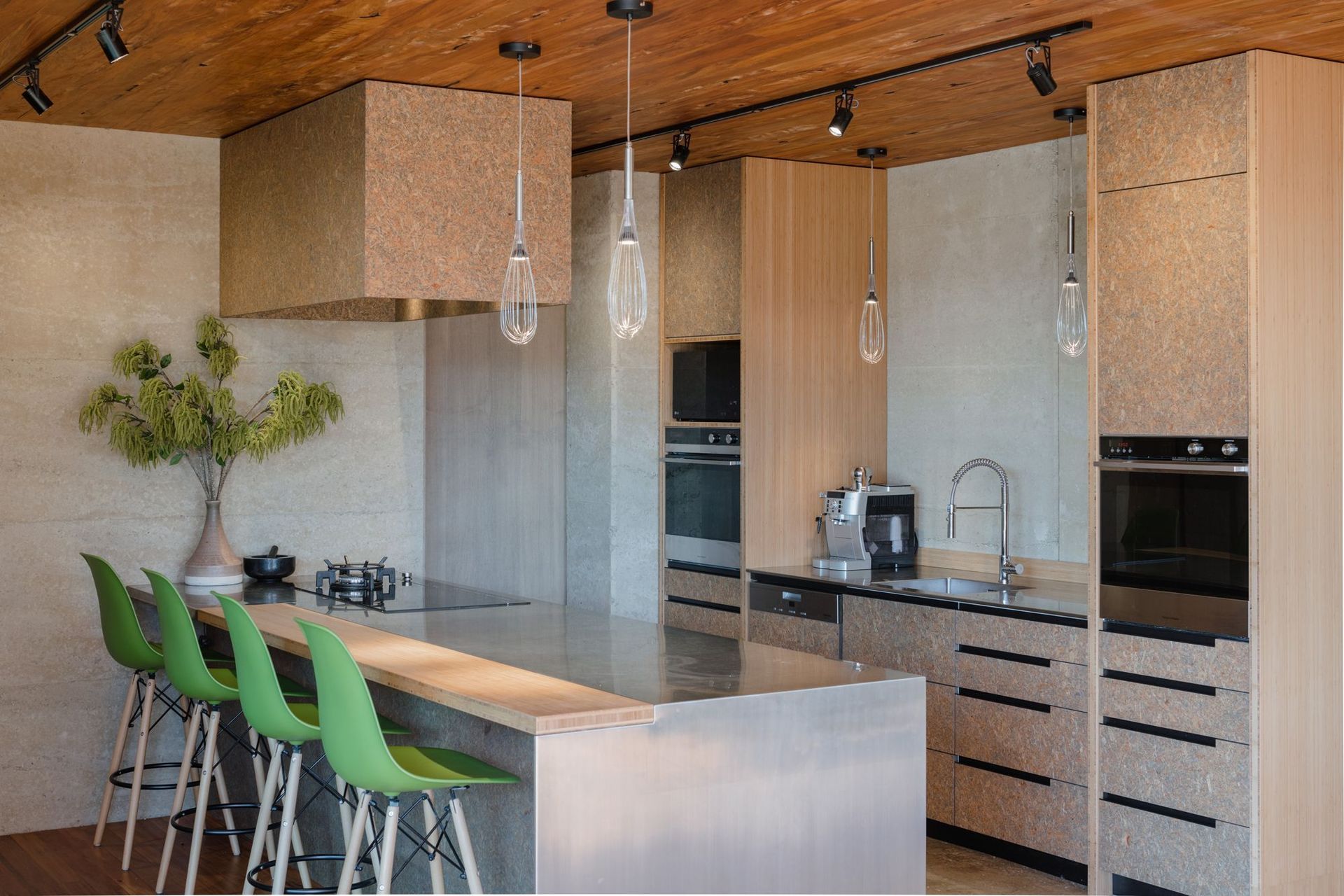
“The house is essentially a courtyard home with planning that has evolved from traditional Japanese ideals of the ‘house as garden’, with spaces designed to be moved through and that offer glimpses of what is to come.
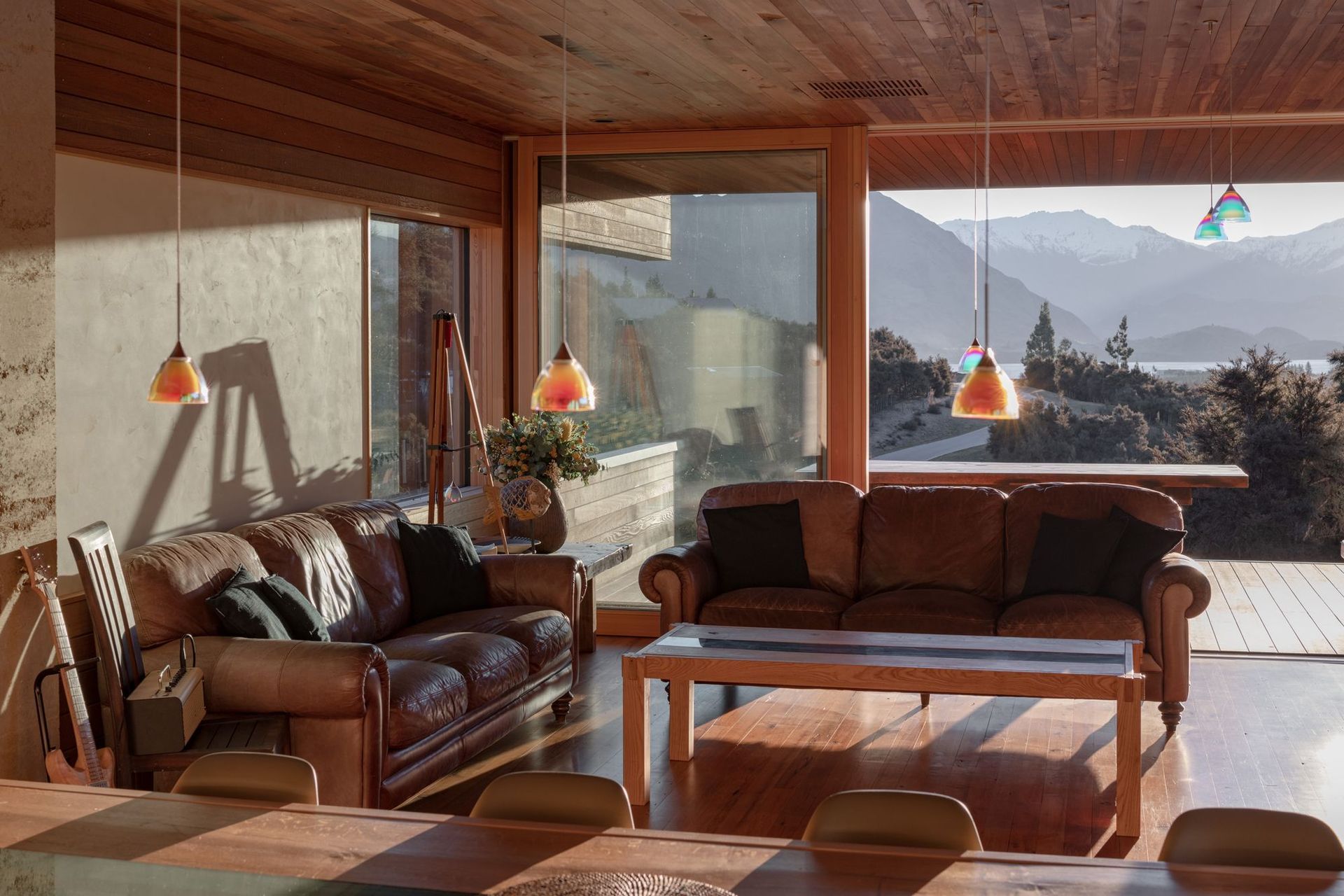
“Central to that theme is the use of materials—rammed earth, various timbers and zinc-coated aluminium—all designed to patina over time with the added benefit of high levels of durability and low maintenance. There is a resulting sense of the house, with it’s rock-like form, being bedded into the landscape.”
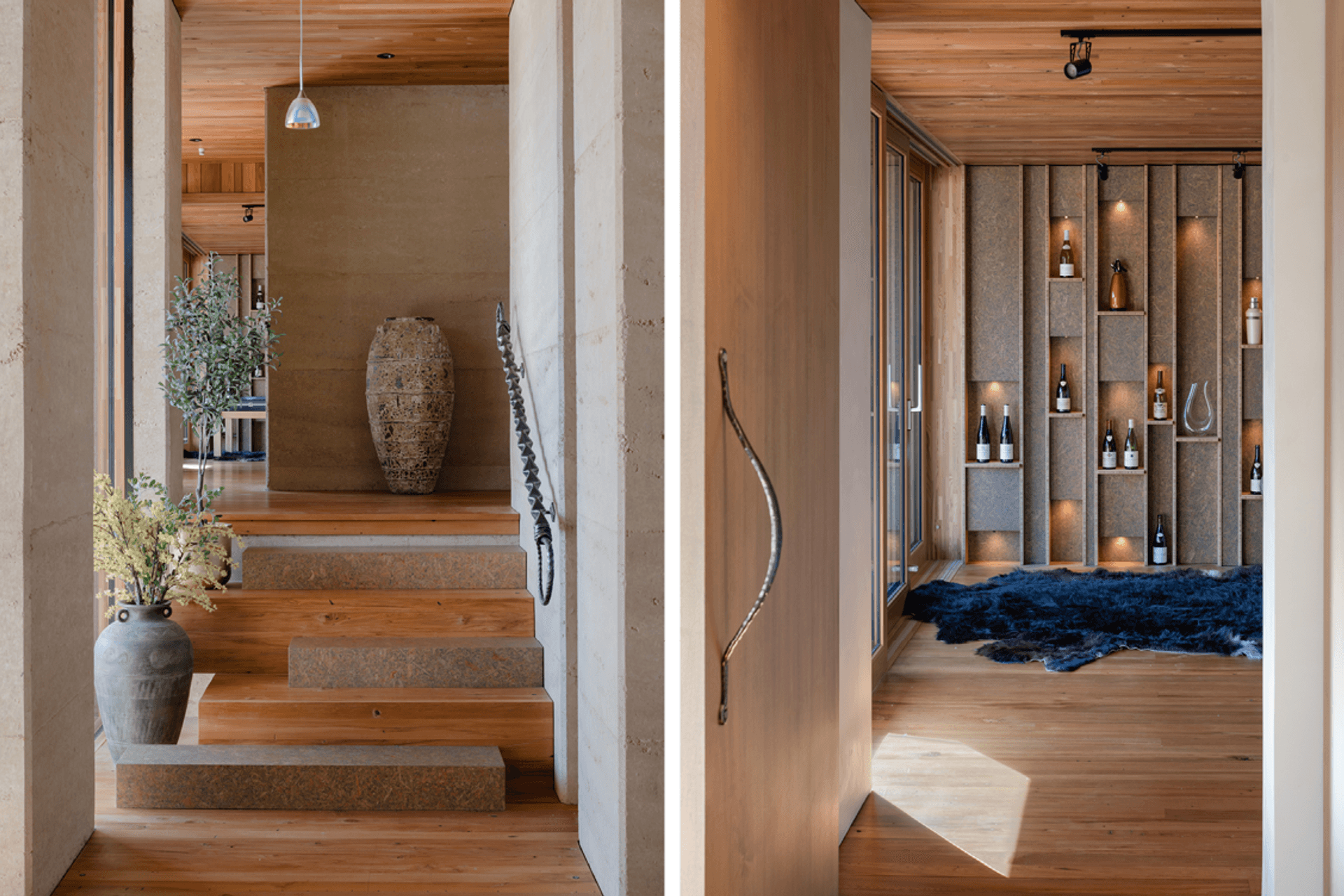
The interior palette was also important to creating the feeling of an inviting and comfortable home, says Andrew.
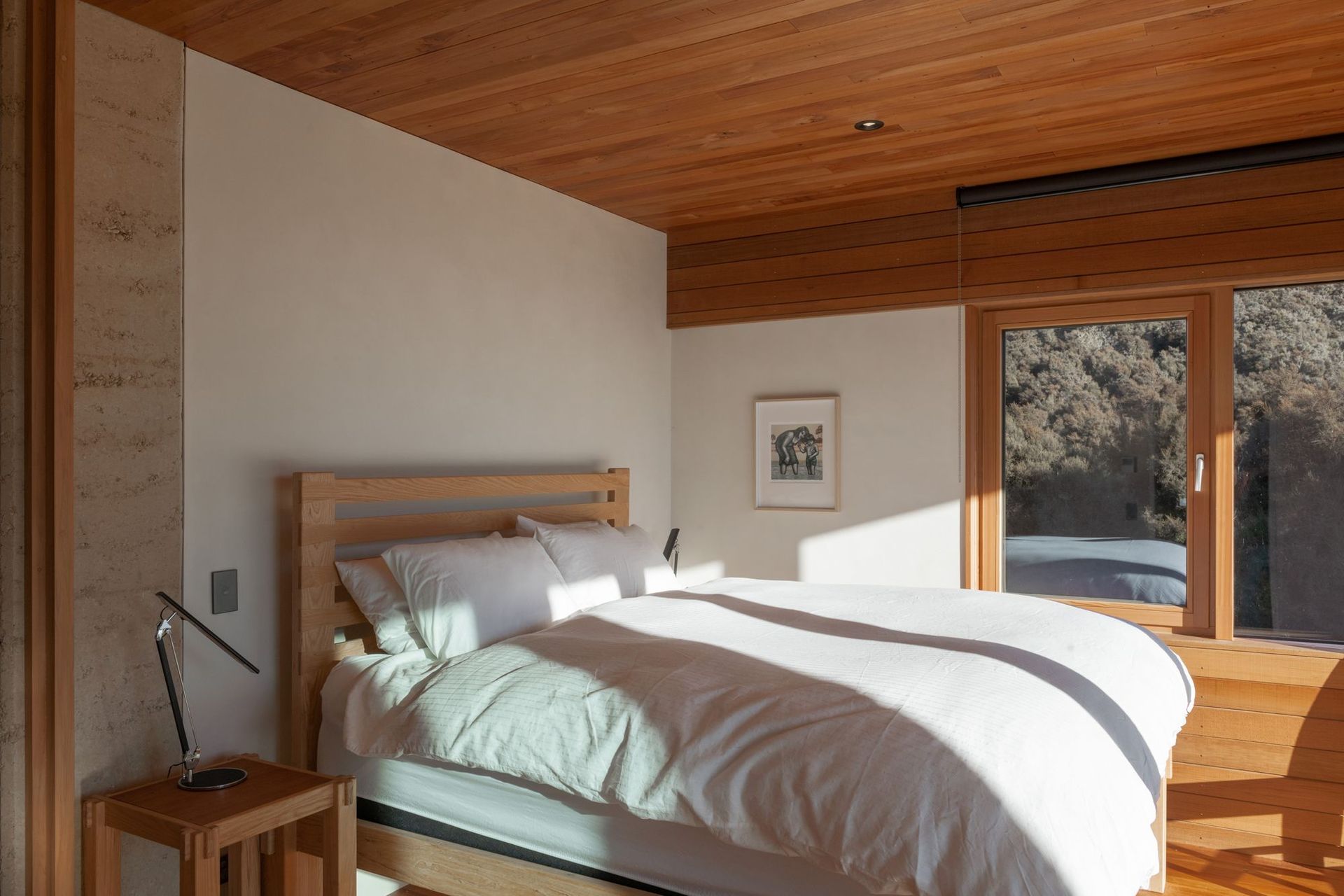
“Sustainability was the key driver for much of the design choices and my client had expressed a preference for recycled timbers that are rustic and warm. However, the materials had to have a story to them; the client didn’t just want timber for the sake of timber. Amongst other things he is also a furniture maker and so the materials’ history was as important to him as the aesthetics, so he sourced much of timber himself.
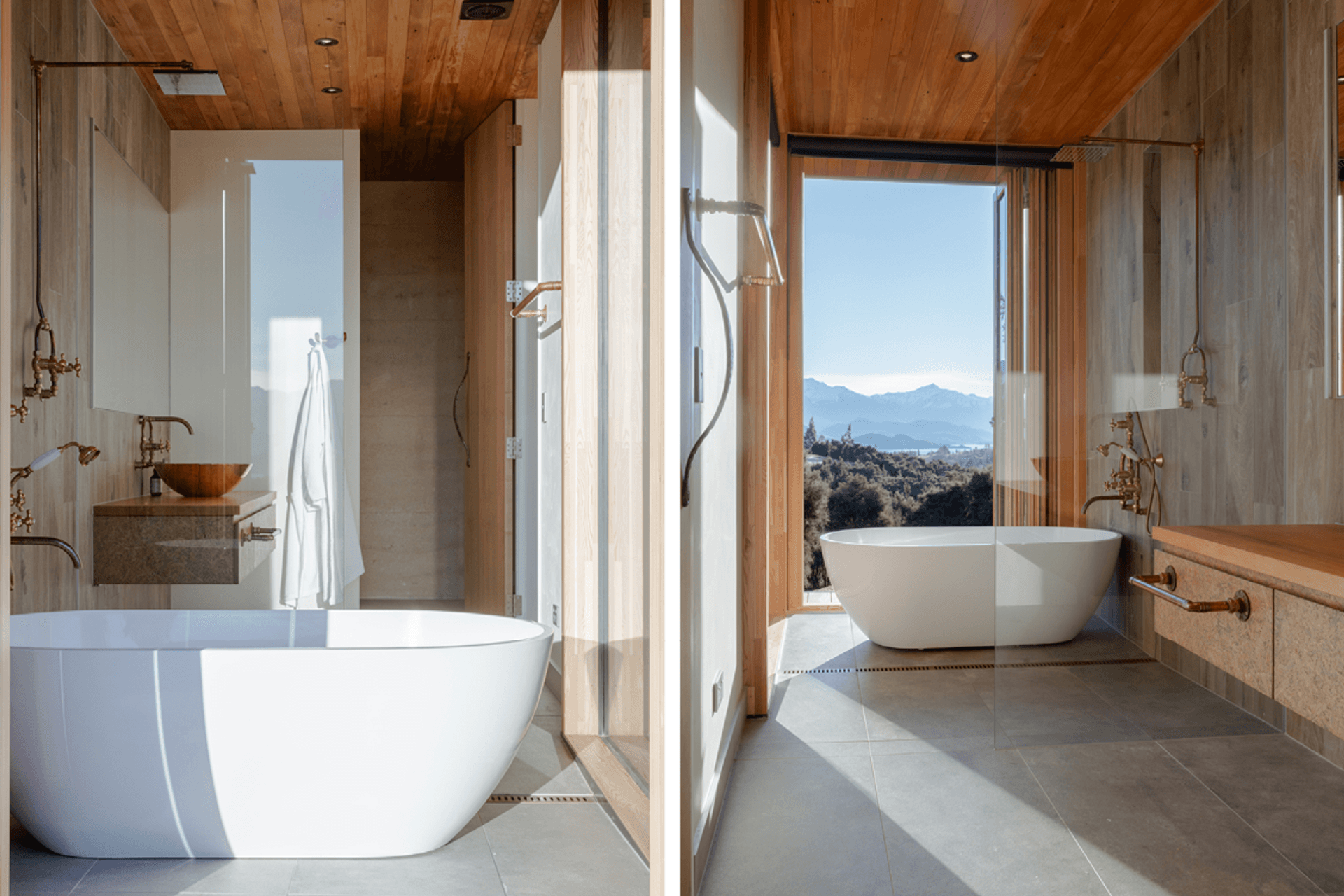
“Alongside the bamboo, rimu and Siberian larch, we did make an unusual choice for a residential project—strand board. Primarily used in commercial buildings, we used stained strand board for the kitchen elements as well as in a number of other areas, most notably on the stairs. The highly textural nature of the product complements the other materials and adds another dimension to the overall scheme.”
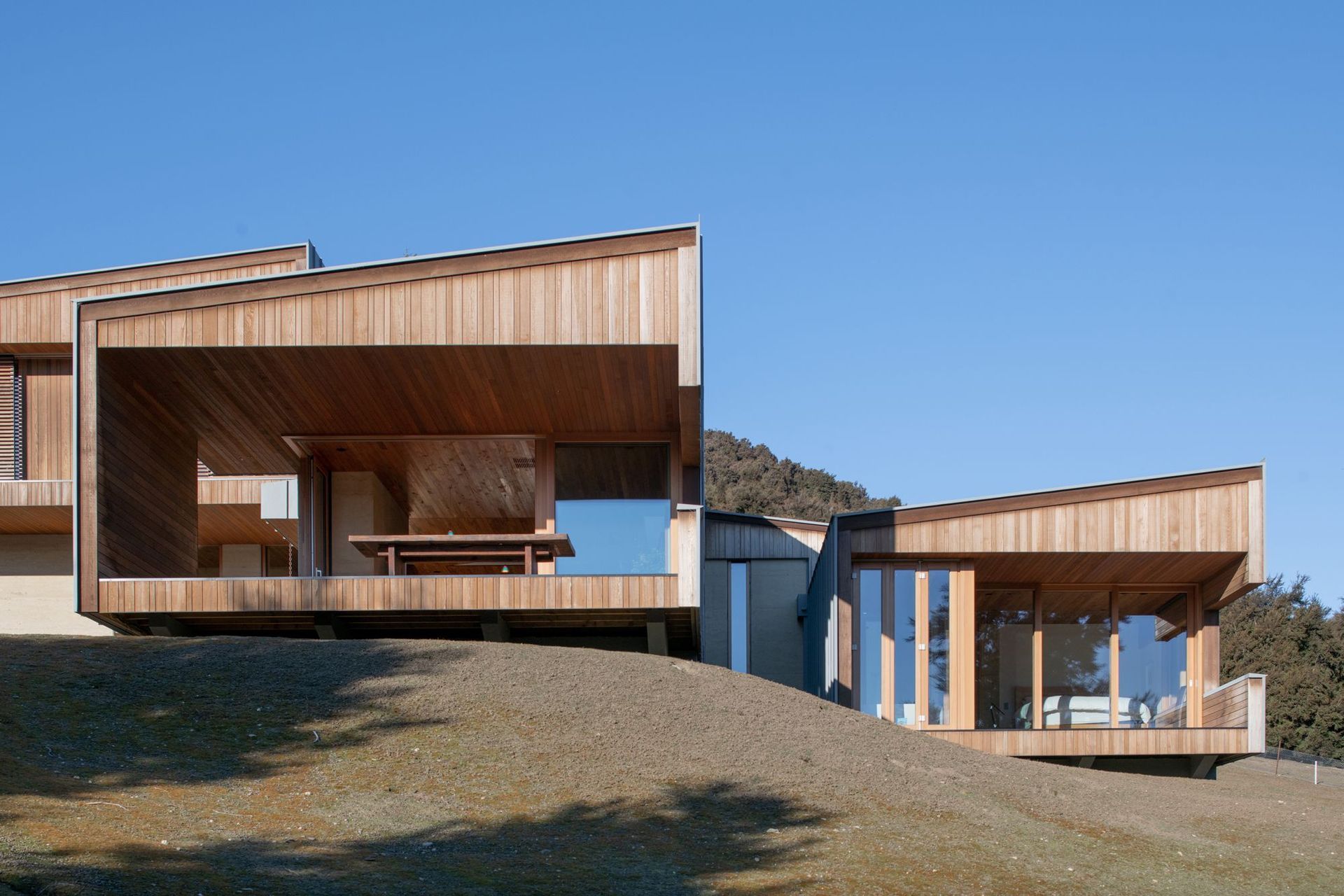
The materials have also been chosen for their various contributions to sustainability—whether its the thermal mass provided by the rammed earth or low-maintenance nature of the timbers and even the high-performance ratings of the glazing and insulation, they all support the goal of creating a comfortable living environment.
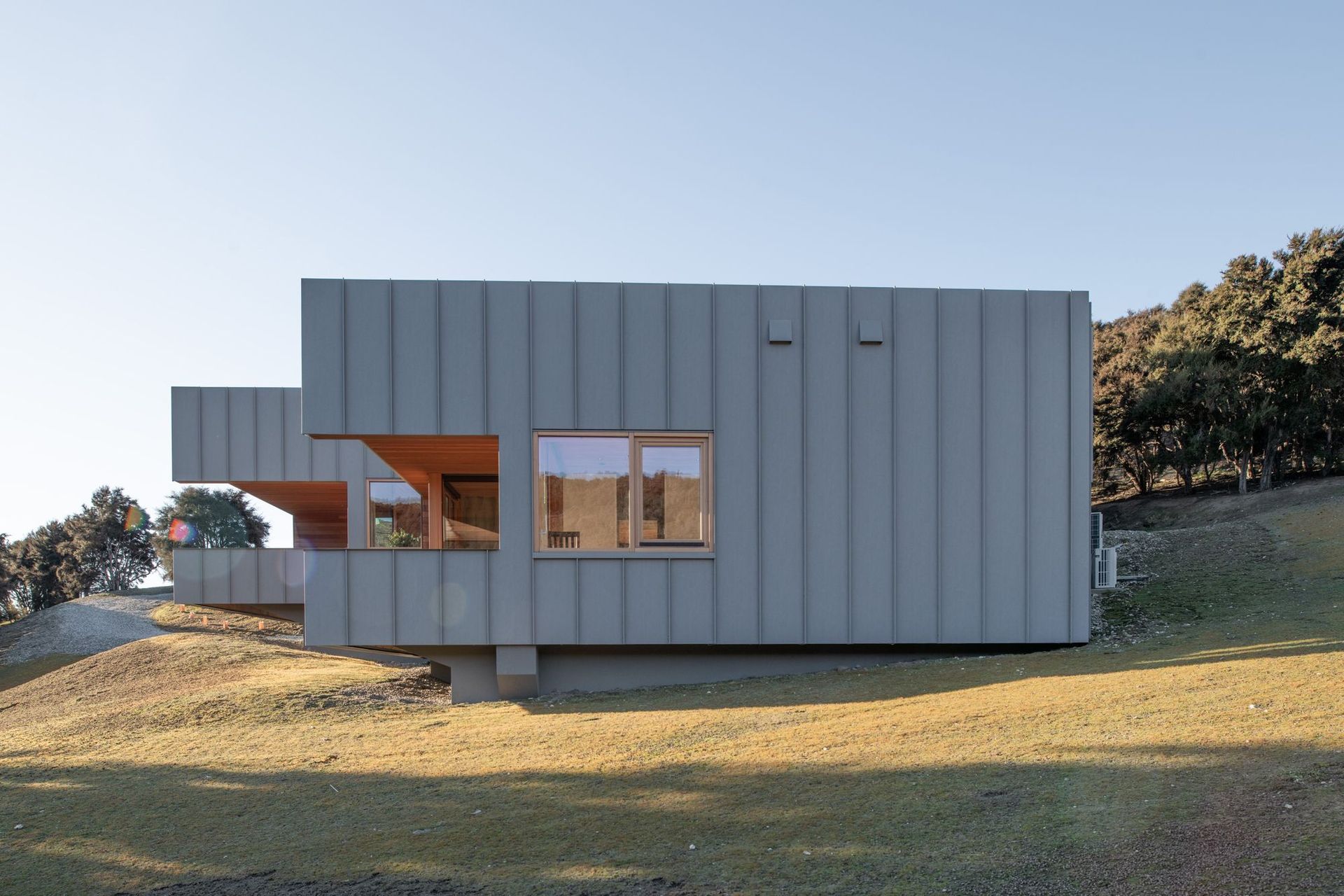
“Thermal mass and passive solar design, teamed with German-manufactured triple glazing and heat pump technology—in line with passivhaus guidelines—has resulted in a home that performs very well thermally. Wanaka is prone to cold winters and hot, dry summers and the house is coping very well with the climatic conditions.
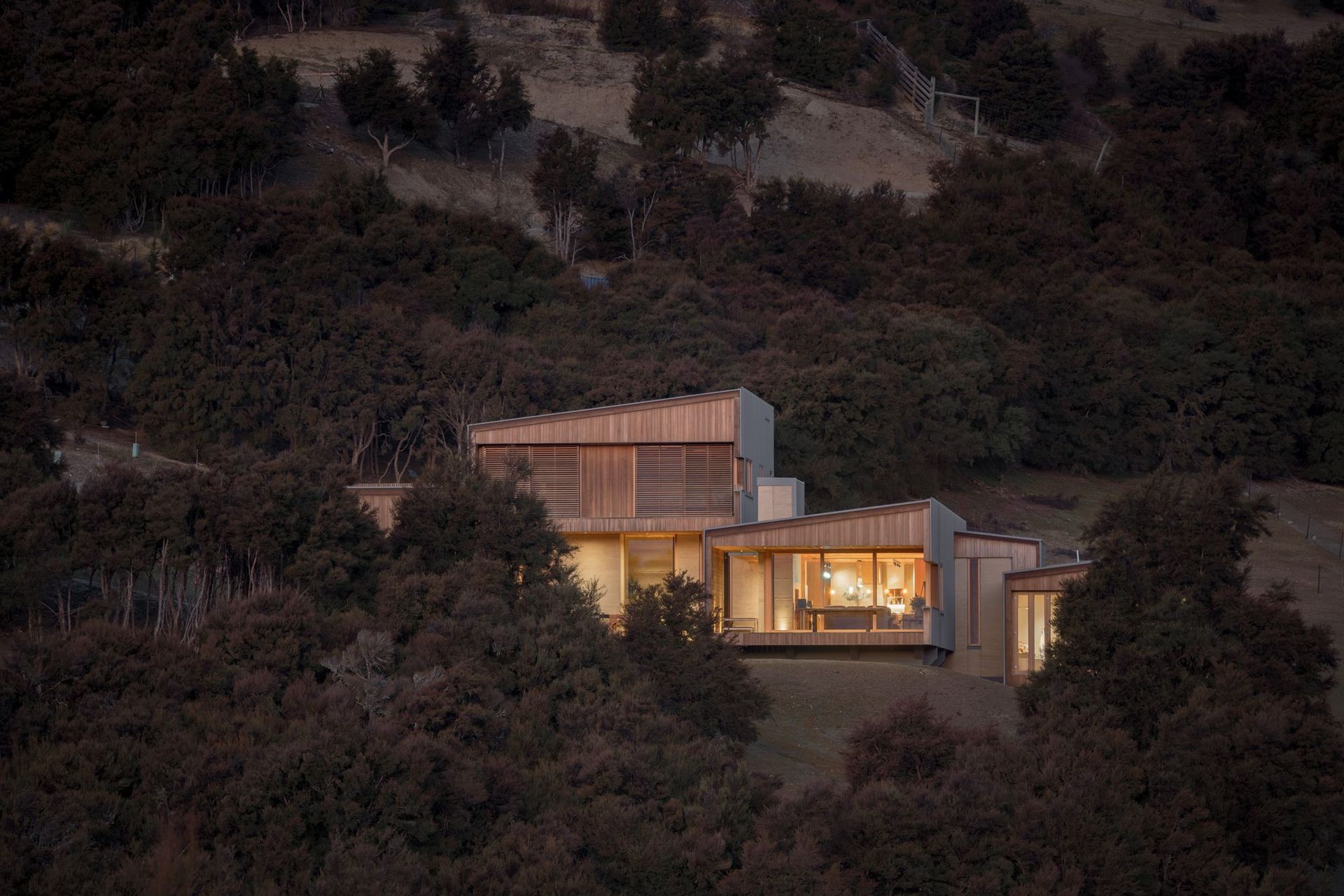
“The stand out feature, for me, is the rammed earth, which binds this home to the landscape while the internal textures create a warm comfortable environment in which to live. So much so that I’m designing my own home using the same material. It provides a quiet, contemplative space quite unlike anything I have experienced before.”
Photography by: Mickey Ross
Learn more about this project on: ArchiPro
